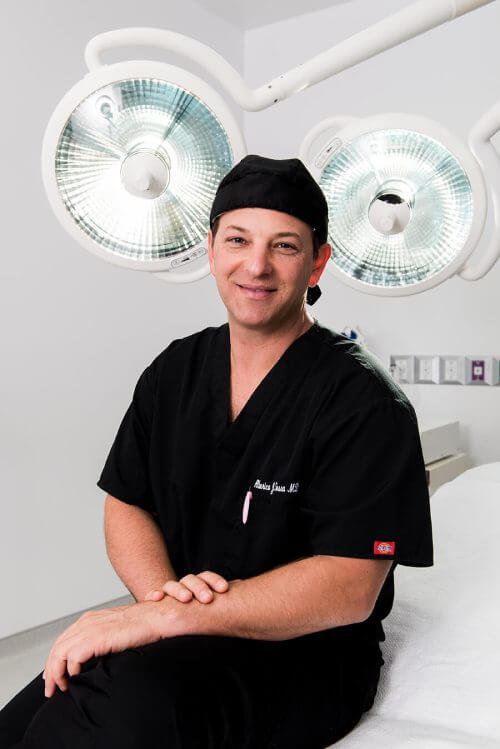So you’re meeting an old friend for brunch, someone you haven’t seen in a couple of years. The moment you sit down, you notice them looking at your face a little more intently than usual, as if they’re trying to figure out what’s changed. A few months ago—fresh from surgery—you might have worried about residual swelling, bruises, or scars. But four months post-facelift, those concerns have largely faded, and you feel a new surge of confidence. You sense that your friend sees something different in you, but they can’t quite put their finger on it. It’s not that you look “different,” per se—you just look refreshed and more vibrant.
That’s the beauty of a well-performed facelift: the goal is to preserve your essence while rejuvenating your appearance. But what exactly should you expect to see at the four-month mark? How do you know if your healing process is on track? Let’s explore some common experiences and milestones people encounter around this stage of recovery.
Settling Into Your “New Normal”
By four months post-facelift, most of the initial swelling and bruising typically has resolved. This gradual transformation may feel like a small, everyday victory. Each week, you might have woken up noticing that the puffiness around your cheeks or jawline had reduced just a bit more. At this stage, most people no longer see lingering discoloration or pronounced swelling. In fact, you’re more than likely looking quite close to the “new normal” you’ll be living with for the foreseeable future.
Still, healing continues under the surface. Your facial tissues—which were adjusted or repositioned during surgery—keep adapting, and it’s not uncommon to feel subtle tightness or find tiny fluctuations in contour over the next several months. Be patient with yourself and continue to follow your surgeon’s guidance regarding follow-up appointments, activity levels, and skincare.
ALSO READ: Which Facelift Lasts The Longest?
Scars and Their Fading Act
Modern surgical techniques typically involve discreet incision placement, often hidden along the hairline or tucked around the ears, to minimize visible scarring. At the four-month mark, most scars should be flattening and lightening. While there might be some slight redness or pinkness, these scars typically become even less noticeable as time goes on. Proper scar care—which can include using gentle silicone-based products or creams as recommended by your surgeon—plays a key role in this process.
Additionally, remember that everyone’s skin heals at its own pace. Genetics, lifestyle habits, and even factors like sun exposure can influence how quickly scars fade. Make sure to protect your scars from direct sunlight as much as possible. Using a broad-spectrum sunscreen (SPF 30 or higher) and wearing hats or protective clothing can help prevent scar discoloration and ensure they become even less noticeable over time.
Numbness and Tactile Sensations
It’s not unusual to experience some numbness, tingling, or even slight nerve sensitivity around the incision areas. This can linger for several months or more. In fact, many patients report sensations like tightness when they smile or move their facial muscles in certain ways. These symptoms are typically normal parts of the healing journey, stemming from the gradual regeneration of nerves and the readjustment of facial tissues.
If these sensations feel persistent or concerning, it never hurts to discuss them with your surgeon. Often, these conversations provide reassurance and, if needed, guide you to gentle exercises or treatments that may support optimal nerve healing and comfort.
Skincare for a Radiant Appearance
The four-month mark is a fantastic time to focus on a skincare regimen that truly enhances your facelift results. Start by ensuring you’re using gentle, physician-approved cleansers and moisturizers—your skin has been through a healing process and is still sensitive. You might also consider incorporating medical-grade products that target issues like pigmentation or texture. Ingredients such as antioxidants, peptides, and retinoids can help maintain and elevate the smooth, refreshed look you’ve gained.
Don’t underestimate the importance of routine professional treatments, too. Facials, chemical peels, or laser therapies—conducted at appropriate intervals and under professional guidance—can nurture the skin and further improve the tone and texture of your complexion.
Continuing Subtle Changes
While four months may feel like a long stretch of time, remember that the full results of a facelift can take up to a year to manifest. During this extended period, you may notice small, ongoing changes in how your face appears and feels. Minor swelling in deeper tissues can still diminish further, allowing your new contours to become even more defined. In many ways, your face is still settling into its updated structure.
Lifestyle Habits for Longer-Lasting Results
You’ve invested time, resources, and care into your facelift—why not protect that investment? Simple lifestyle habits can extend the longevity of your refreshed look:
- Sun Protection: Harmful UV rays can cause premature aging and affect scar quality. Make sunscreen a non-negotiable part of your daily routine.
- Healthy Diet & Adequate Hydration: Nourishing foods help support collagen and overall skin health. Drink plenty of water to keep your skin looking plump and radiant.
- Smoking Cessation: Smoking can slow down the healing process and lead to early aging. If you haven’t quit yet, consider using this milestone as motivation.
- Exercise in Moderation: Gentle, consistent exercise promotes healthy blood circulation without overexerting the healing tissues.
At four months post-facelift, you’re likely seeing a clear glimpse of the rejuvenated face you set out to achieve. While the healing journey continues, your reflection should already display smoother contours, a firmer jawline, and a naturally refreshed appearance. And as you catch yourself smiling in the mirror, you might notice the confidence that comes from looking on the outside the way you’ve always felt on the inside.
Looking for expert guidance on facelift procedures? Contact Sarasota Surgical Arts to learn how our individualized approach can help you bring out the youthful, refreshed version of yourself. It’s never too late to invest in the face you’ve always wanted.





